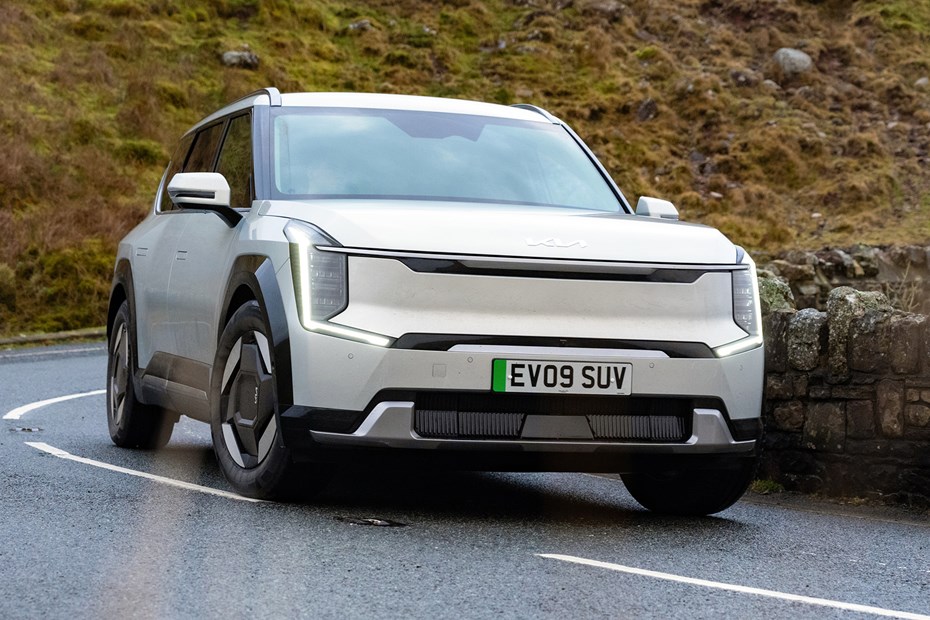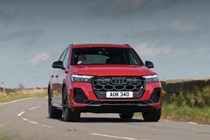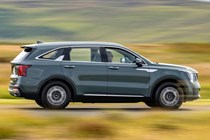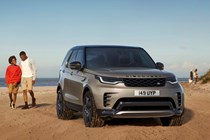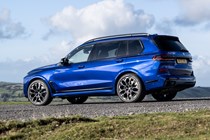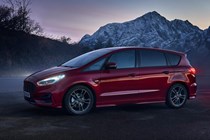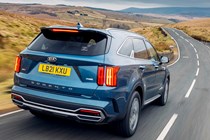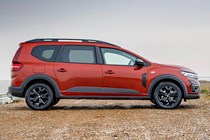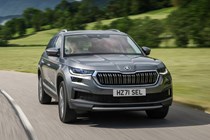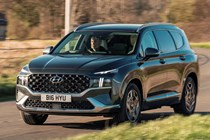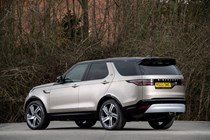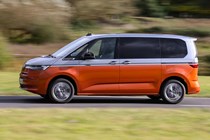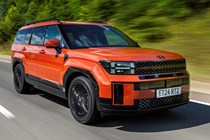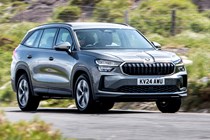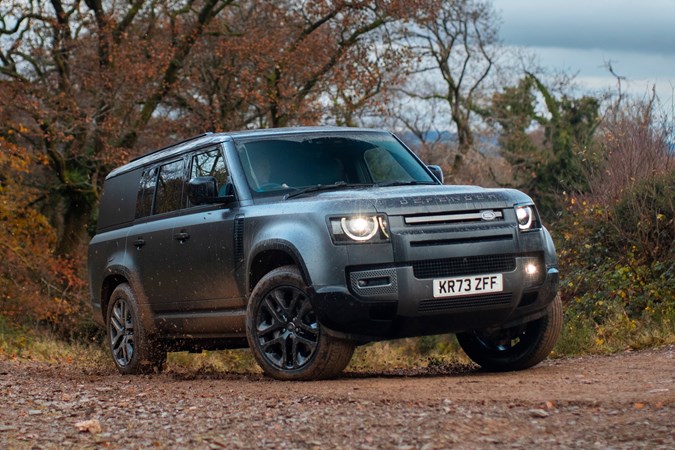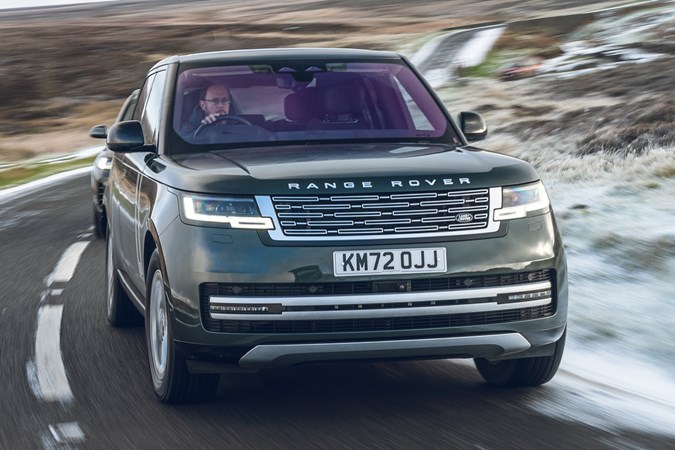Seven seaters are fantastically versatile cars. If you have a big family (or loads of mates), they afford you the luxury of carting everyone around in the same vehicle. That’s incredibly convenient if you’ve got a jam-packed schedule of concerts and events – and you always end up being the designated driver.
These days, though, that’s less of a sacrifice because the very best seven-seaters on sale are both practical and good fun to drive. Times have changed – car manufacturers can’t get away with simply cutting some windows in a panel van, bunging some seats in its load bay and firing it into the showrooms. Modern drivers demand much more.
For that reason, MPVs have declined in popularity – and enormous seven-seat SUVs have exploded onto the scene to fill the void. It’s easy to see why, too. They’re stylish, they’re packaged well enough to rival MPVs on the practicality front and, because most of them are based on conventional car platforms, they’re surprisingly good to drive.
Scroll down for our pick of the current seven-seater crop. SUVs dominate the list, but there are still a few MPVs and commercial-vehicle-based people carriers clinging on.
The best seven-seater cars for 2025
Possibly Kia's best car yet, and an award-winner to boot
It’s based on the same platform as the EV6, so it’s great fun to drive. You also get a seven-year warranty, loads of clever technology and a massive boot. What’s more, it’s remarkably easy to cover long distance in as its battery provides between 280 and 300 miles of range and, when you do need to recharge it, you can add 148 miles in just 15 minutes.
It’s no wonder we made it our best seven seater in this year’s Parkers new car awards.
To find out more, read our full Kia EV9 review
Pros
- Engaging driving experience
- Superb, high-quality interior
- Super-fast 800V charging tech
Cons
- Heavy and large for town
- Poor air-conditioning controls
It's old, but it's better to drive than all its rivals
To really test the limits of the Q7's capability, our Deputy Editor recently drove one from Parkers HQ to Cumbria, and then on to Glasgow with his entire family on board. His V6-powered Q7 handled the 700-mile round trip with ease – and not a single member of his family complained about being uncomfortable. What more recommendation do you need?
To find out more, read our Audi Q7 review
Pros
- Exemplary build quality
- Loads of space, everywhere
- Great fun to drive
Cons
- 3.0-litre V6 model is thirsty
- Lacks ultimate off-road ability
The best seven – or six – seater
Unlike the Caravelle it replaced, the Multivan rides on the same underpinnings as the latest Golf. That means, despite looking like a van, it's far better to drive than its commercial vehicle-based rivals from Peugeot, Citroen and Vauxhall.
Most models feature a 2-2-3 seating layout, although you can specify six captain's chairs as an optional extra for a little more luxury. Accessing the third row is easy, with the centre seats sliding well out of the way. You can also buy petrol, diesel and plug-in hybrid versions, which means there should be something for everyone here.
To find our more, read our full Volkswagen Multivan review
Pros
- Very flexible seating
- Available as a plug-in hybrid
- Drives like a car, not a van
Cons
- Petrol engines are thirsty
- Looks a bit like a van
Appeals equally to head and heart
We love the Kodiaq, especially when it's teamed with Skoda's meaty 2.0-litre diesel engine. It offers the best towing capacity and the highest fuel economy (if you ignore the fact that you can do 60 miles on electricity alone in the PHEV model). A word of warning – you can't have the plug-in model with seven seats.
To find out more, read our full Skoda Kodiaq review
Pros
- Comfortable, practical interior
- Competitively priced
- Huge boot
Cons
- Petrol models underwhelming
- Expensive optional extras
Eye-catching, practical and with a big warranty
There are two powertrains to choose from. It is now a hybrid-only SUV, in either self-charging or plug-in guise, both of which offered fuel economy in the 40mpg range during our real-world tests. The plug-in gives the Santa Fe a surprising turn of speed, with a 0-62mph time of less than eight seconds. It can also deliver of three-figure mpg, assuming you remember to plug in.
To find out more, read our full Hyundai Santa Fe review
Pros
- Space for adults in all three rows
- Frugal despite size
- Better than average warranty
Cons
- Pricey and not as luxurious as some
- Dynamics nothing to write home about
Full-size SUV is refined with clever touches
There’s plenty of space inside for seven adults, although the rearmost row of seats is a tad more snug than those in front. But the interior quality and high levels of equipment really impress. Plus all Kias come with a seven-year warranty and they're usually incredibly reliable, making the Sorento a pragmatic long-term ownership proposition.
To find out more, read our full Kia Sorento review
Pros
- Huge warranty
- Adaptable interior
- Plug-in hybrid works well
Cons
- Some models are pretty slow
- No cheaper front-wheel drive model
Huge inside and out, and excellent on the road
It’s powerful (especially if you go for the V8), comfortable (thanks to clever air suspension), unstoppable off-road (because of Land Rover’s excellent four-wheel drive system) and, despite its slightly gawky appearance, extremely cool.
Be warned, though. You need a deep wallet to buy and run one, along with an airstrip-sized driveway to store it. If your needs are more modest, a Defender 110 or a Kia EV9 (if you don't do off-roading) makes far better sense.
To find out more, read our full Land Rover Defender 130 review
Pros
- Space inside for eight adults!
- Enormous boot in five-seat mode
- Virtually unbeatable off-road
Cons
- Massive size is tricky in town
- Options quickly inflate the price
The most opulent way to transport seven
You’ll have to go for the long-wheelbase model to unlock seven-seats. But even fully grown adults will find enough space in the rearmost pews. There are alternatives are out there, such as the Audi Q7, BMW X7 and Mercedes-Benz GLS, but none feel quite as special.
To find out more, read our full Range Rover review
Pros
- Award winning luxury
- PHEV has long electric range
- Superbly comfortable
Cons
- Expensive compared with other seven seaters
- Possibly wrong image for these times
A seven-seat MPV with a dash of SUV styling
The hybrid model is the one to have if you're looking for the best performance and economy, but we can't help admire the value and overall capability of the more basic petrol versions. It didn’t score well in the Euro NCAP crash results. But there’s a story behind that.
To find out more, read our full Dacia Jogger review
Pros
- Incredible value
- Spacious for its size
- Easy to drive
Cons
- Interior low rent compared with rivals
- Low safety score
BMW’s Range Rover
Climbing back to row three requires a bit of flexibility, but there’s plenty of room for fully grown adults once seated (as long as the middle row is moved forwards slightly). You even get armrests, cupholders, heated seats, air vents and a climate-control panel back there. If you can live with the looks and divisive image, this is rationally a better choice than the Range Rover.
To find out more, read our full BMW X7 review
Pros
- Powerful and refined
- Handles well for its size
- Quality interior
Cons
- Enormous
- Challenging looks
Which seven-seaters are best: MPVs or SUVs?
This is purely down to personal choice and reflects the fact that simply because a car has seven seats, it doesn’t mean that it will appeal to all buyers.
Most SUVs are typically taller versions of regular hatchbacks and estates with more of an off-road appearance, regardless of whether they can venture off piste or not. Many are available with four-wheel drive for those who need that additional traction. Generally, seven-seater SUVs tend to be a bit short on space in the back row of seats, often a result of their styling.
Work out whether you need seven seats all of the time; if you only need those extra seats every now and then, consider a smaller seven-seater where the rearmost pair are smaller and designed primarily for kids. If you regularly carry six or more people, then bigger is usually better.
Petrol, diesel, hybrid and electric seven-seaters
While the majority of seven-seaters are large vehicles and have previously been better suited to torquey diesel engines, electrification is becoming more readily available.
Whether you’re looking for a regular hybrid, a plug-in (PHEV) model or even a fully electric seven-seater, the choice is widening – but for the time-being they’re more expensive than those with conventional engines. Automatic seven-seaters are now much more commonplace, with few such cars being offered with manual gearboxes.
Just so you know, we may receive a commission or other compensation from the links on this website - read why you should trust us.


